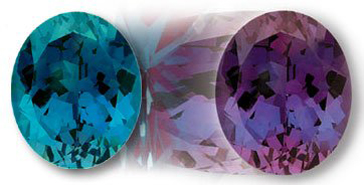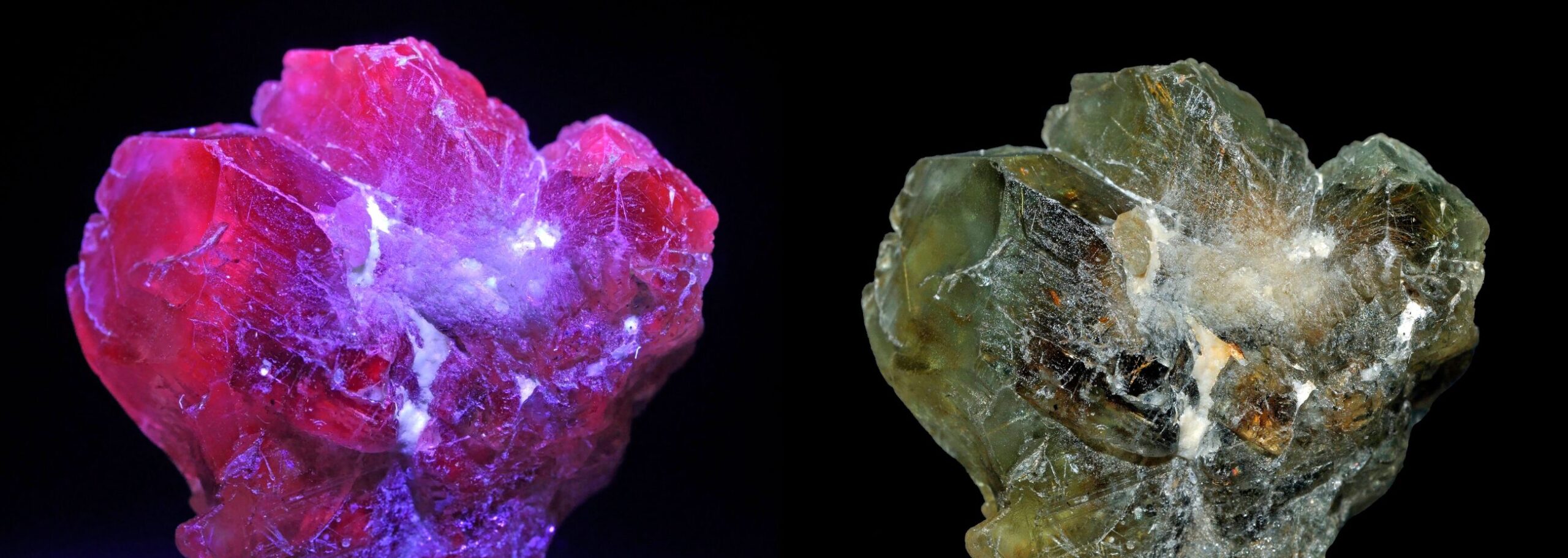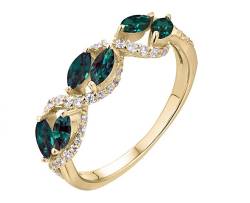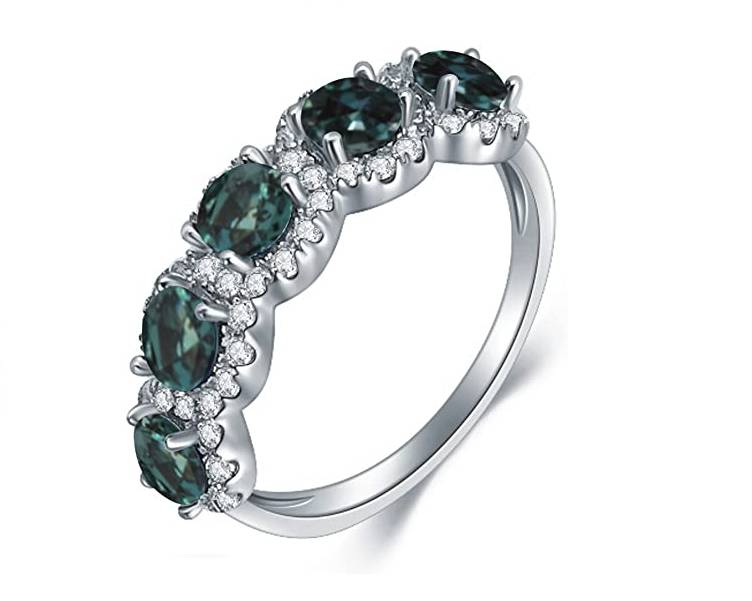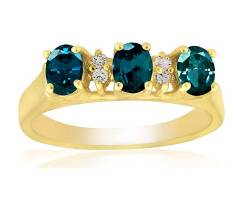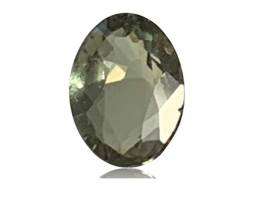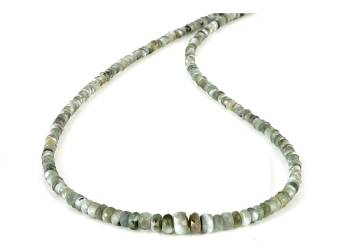Learn About Gemstone Alexandrite While Choosing An Alexandrite Jewelry Piece For Yourself.
Alexandrite is a unique form of the mineral chrysoberyl, an aluminate of Beryllium. As a variety of Chrysoberyl, Alexandrite belongs to the same family of gemstones as emeralds. Furthermore, Its color-changing properties and its scarcity (rarer than diamonds) are due to an exceedingly rare combination of minerals, including titanium, iron, Chromium, and Beryllium.
12x10mm Oval Gem Quality Chatham Lab-Grown Color-Change Alexandrite 5.53-6.75 Ct
Granite rocks, alluvial deposits, pegmatites, and mica schist all host Chrysoberyl. Still, we mostly find Chrysoberyl while mining in river sand.
Chameleon Like Color Change
Alexandrite is a stunning gemstone since it can undergo dramatic shifts in color depending on the kind of light. The color change depends on your viewing angle; a jewel that shifts colors when you rotate it in your hand is pleochroic. Alexandrite is strongly pleochroic, but it can also change colors independently of viewing angle when viewed under an artificial light source.
Mined in Espírito Santo, Brazil, this alexandrite crystal appears green in white light, but red in ultraviolet longwave light. Photos by Géry Parent. Licensed under CC By 2.0.
The finest examples of this gemstone change color from mossy green in daylight (or fluorescent light) to raspberry red in incandescent light. This color change is the most spectacular in the gem kingdom.
You are bound to fall in love with this magical color-changing stone. The CIBJO nomenclature classifies chrysoberyls displaying distinct color change as Alexandrite.be termed as Alexandrite.
The scientific explanation of this magical color change lies in the stone’s composition. Alexandrite is a unique variety of Chrysoberyl. It contains Chromium as a significant impurity in addition to the usual impurities like Iron & Titanium found in other chrysoberyls. Chromium causes a dramatic color change to occur in the stone. Rarely though, Vanadium may also play a part in it.
Click On The Images
Geological Conditions and Chemical Composition
Its unique & complex chemical composition makes Alexandrite an extremely scarce gemstone.
Its unique & difficult chemical composition makes Alexandrite an extremely scarce gemstone.
Like most other gemstones, Alexandrite takes shape for millions of years in a high-pressure, high-temperature metamorphic environment. But unlike other gemstones, its creation requires a particular set of geological conditions.
All chrysoberyls, including Alexandrites, carry Beryllium as a significant constituent. Chromium is the coloring agent in Alexandrites. Beryllium & Chromium have conflicting chemical characteristics & do not occur together in nature. As a rule, only dissimilar rocks host them.
Nature has to conspire to bring such dissimilar rocks together. But, at the same time, it has to eliminate the presence of Silica from the vicinity. Only then can Alexandrite be born. The absence of Silica prevents the growth of emeralds. The scenario with such a specific set of stipulations required for Alexandrites to come into existence rarely occurs in nature. As such, Alexandrite crystals are scarce indeed.
An alexandrite of more than one-carat weight is rarer than fine ruby, sapphire, or emerald. Miners hardly find such large stones today because of the rarity. On account of its rarity, it is hardly ever used in modern jewelry. However, you might encounter one in antique Russian Alexandrite jewelry as the Russian master jewelers loved this stone.
Click On The Images
Alexandrite Mining in Russia
Emerald mining operations next to the Russian Ural Mountain ranges in April 1834 first unearthed the intriguing Alexandrite.
Legend has it that the miners in an emerald mine discovered a vein of what they thought were more emerald. Later on, they observed their discovery by the light of the campfire in the evening. And they were astounded to see that the rough rock now revealed a reddish hue instead of the earlier emerald green.
Ostensibly, diggers discovered the gem on the birthday of the boy tsar Alexander II (1818-1881). As such, the stone was named Alexandrite after the future tsar. Hence, the stone is also known as tsarstone.
The old Russian Imperial Colors were red & green, so Alexandrite was only mined for royalty. Consequently, it became the national stone of tsarist Russia.
In time, Alexandrite became one of the most prized gemstones amongst Russian Aristocracy. It became prevalent in Russian antique jewelry because the old master Russian jewelry designers greatly admired it. Victorian jewelers used the smaller Alexandrite gemstones in Victorian jewelry too.
Tiffany’s master gemologist George Frederick Kunz (1856-1932), was also completely fascinated by Alexandrite. He fell so much in love with this gemstone that he traveled to Russia in search of it.
It is not exactly known how much of the gemstone he bought. However, Tiffany held a reserve sizable enough to dominate the market for the stone for decades together. They produced some exquisite series of Alexandrite rings and Alexandrite platinum ensembles at the end of the 19th and beginning of the 20th century.
Oval Natural Alexandrite Loose Gemstones
Click On The Image
Alexandrite: Quality, Value and Availability:
Alexandrite is exceptionally rare and precious in fine qualities.
The gemstone is also known as a phenomenal gemstone for its incredible ability to change color. This phenomenon makes Alexandrite one of the most expensive gemstones in finer qualities and larger sizes.
Its color, or more appropriately, “colors,” give Alexandrite its unique quality.
Gem aficionados covet warm ‘ruby’ red & lush ‘emerald’ green colors for Alexandrites. Nevertheless, the jewel is seldom able to achieve this benchmark. These are the striking hues of the original Russian Alexandrite. Genuine Russian Alexandrite Jewelry is extraordinarily rare and carries enormous value. Alexandrite from other locations tends to be less vivid in different degrees.
While appraising an alexandrite, pay the closest attention to its color change. The more spectacular and complete the shift from red to green, with no bleeding through of brown or grey, from one color to the next, the more valuable & singular is the stone.
The other important value factors are:
- Attractiveness of the stone.
- Intensity of the two colors.
- Clarity
- Color quality.
Larger stones of good quality can command high premiums because of their extraordinary rarity.
Lapidaries most often facet Alexandrites into oval and cushion cuts. Finely faceted Alexandrite above one carat is among the most expensive gemstones globally. It is rarer than fine ruby, sapphire, or emerald.
This gem measures 8.5 on the Moh’s scale. Only diamond and corundum surpass it in hardness.
Olive Green Natural Alexandrite Cats Eye Faceted Rondelle Beads Necklace With 925 Sterling Silver Chain
Click On The Image
Alexandrite Sources:
Russia remained the primary source of Alexandrite from the time excavators initially discovered them in the mines of the Ural Mountains
But this source has long since closed after producing the gems for only a few decades. As a result, very few Russian stones can be seen on the market today. The best of these are outstandingly true red & green.
After the depletion of the Russian deposits, interest in this color-miracle-stone waned. Enthusiasm dwindled notably because Alexandrite from other regions never displayed the coveted degree of color change.
In 1987, Alexandrite, with a clear & conspicuous color change from “raspberry” red to bluish-green, was discovered in the Hematita region of Brazil. It was the Lavra de Hematita mine in the Brazilian state of Minas Gerias (which means general mines).
The Brazilian Alexandrite shows a distinctive color change as well as fine clarity and color. Occasionally Alexandrite displaying the phenomena of chatoyancy is also found here.
Hematita gems from Brazil are highly valued and coveted, but production has shrunk to a trickle. Nevertheless, Hematita remains one of the most important deposits of Alexandrite in economic terms today.
India, Sri Lanka, Madagascar, Tanzania & some other regions of Brazil also supply some Alexandrite. Even so, very few can show a dramatic color change.
Alexandrite Jewelry: Routine Enhancements Care and Cleaning:
There are no routine enhancements of the gemstone Alexandrite.
Alexandrite measures 8.5 on Moh’s scale of hardness. The degree of hardness ranks only third after diamond and corundum. This excellent degree of toughness makes the stone easy to wear, care for, and to clean.
Clean Alexandrite Jewelry with mild dish soap and use a soft tooth brush to scrub behind the stone where dust usually collects.
Click Here To View Natural Alexandrite Gemstone Jewelry
See More Gemstones As Follows
I m a g e G a l l e r y
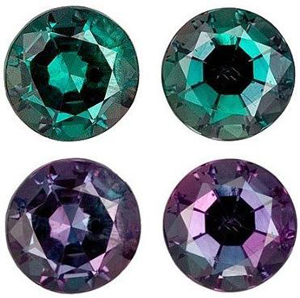 |
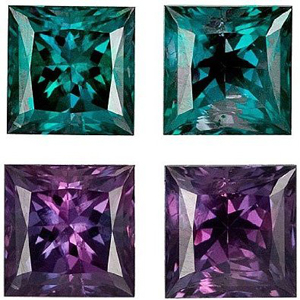 |
|
| Unique Fine Alexandrites in Matched Pair Round Cut Dramatic Color Change Clean 1.01 Carats Total | Incredible Fine GEM Alexandrites in Matched Pair Princess Cut 1.73 Carats Total Weight |
Classic Round GEM Grade Brazilian Alexandrite set In Twisted Shank Diamond Ring
 |
Notice The Dramatic Color Change Of The Color Changing Alexandrite
Finest Real Alexandrite and Diamond 3 Stone Ring set with GEM Grade 1 carat Genuine Alexandrite & 0.50 carat Diamond in Platinum
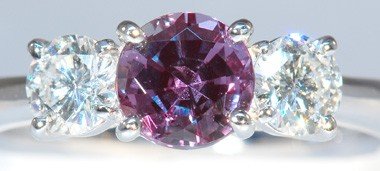 |
Glorious Alexandrite Vintage Band Featuring Genuine Alexandrite & Diamond in 14 kt Yellow Gold
 |
Genuine Alexandrite Apple Pave & Diamond Pendant in 18 kt White Gold
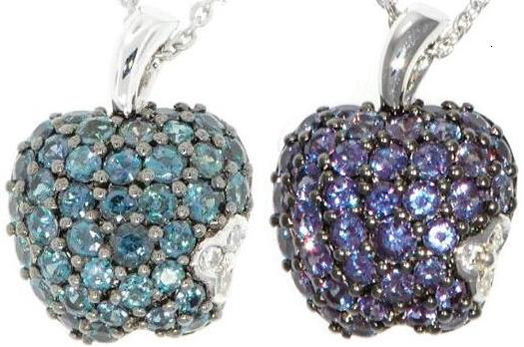 |
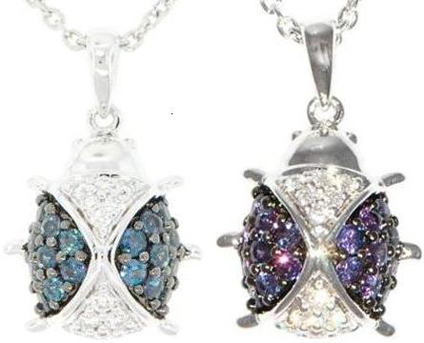 |
Unique Starfish Jewelry Real Genuine Alexandrite Pave & Diamond Pendant in 18 kt White Gold
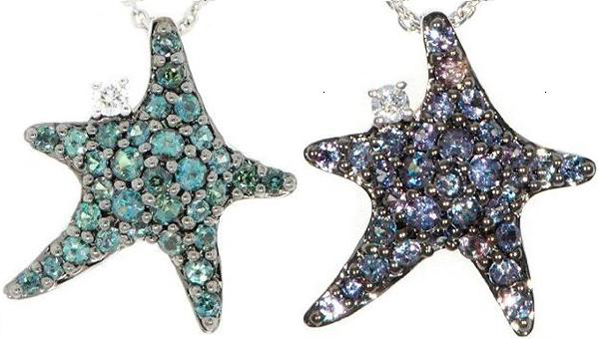 |
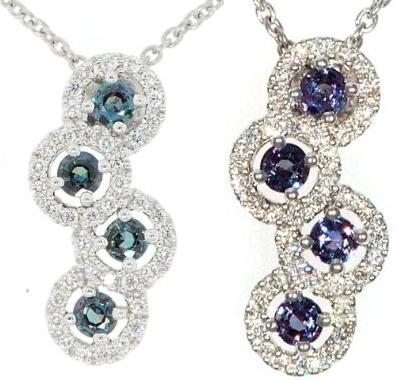 |
Genuine Oval Cut AAA Brazilian Origin Alexandrite and Diamond Pendant in 18 kt White Gold
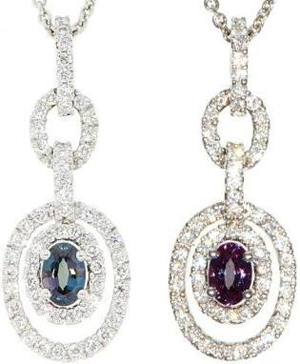 |
Bold Stunning Large Oval GEM Grade Natural Alexandrite Engagement Solitaire Gold Ring
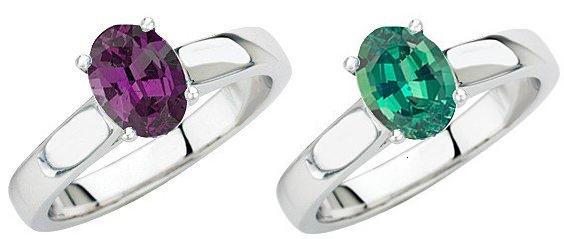 |
Stunning Oval Cut Genuine Alexandrite GEM Mounted in Custom Made White Gold Diamond Ring
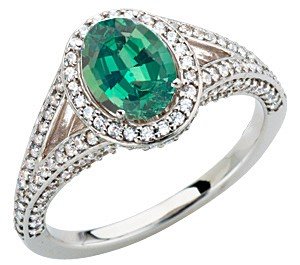 |
Tiffany Style Custom Made Ring Featuring a Genuine GEM 1 carat Alexandrite Gemstone
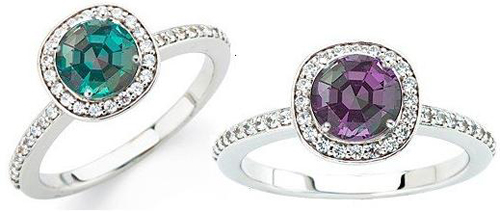 |
Genuine Alexandrite Mounted in Yellow Gold Cluster Ring set with Diamonds
 |
